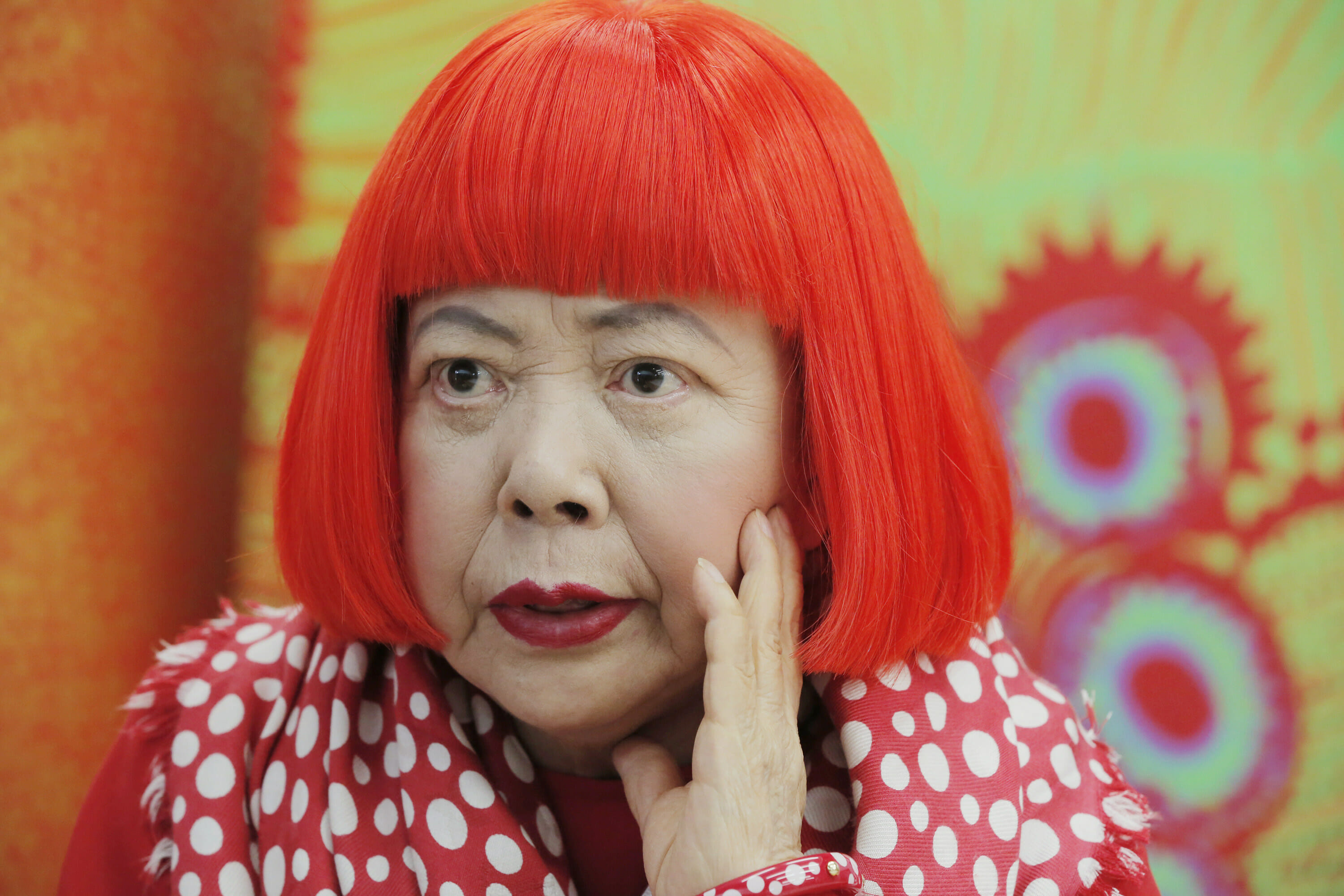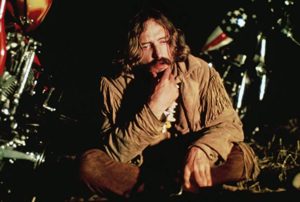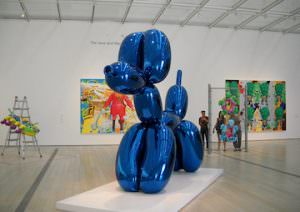A Portrait of an Artist as a Young Woman
A new documentary explores Yayoi Kusama’s journey from ’60s obscurity to Instagram sensation and global phenomenon. Japanese avant-garde artist Yayoi Kusama. (Itsuo Inouye / AP)
Japanese avant-garde artist Yayoi Kusama. (Itsuo Inouye / AP)
Disregarded during her most productive years in the New York art scene of the 1960s, Yayoi Kusama finds herself the subject of an engaging new documentary, “Kusama: Infinity,” which explores how her masterwork, “Infinity Mirror Rooms,” became an Instagram sensation, vaulting her to fame and fortune. Today, Kusama is among the world’s top-selling female artists.
Director Heather Lenz, who cut her teeth in television, conjures an evocative but ultimately two-dimensional portrait of a fascinating character, splicing stirring archival footage with interviews with professionals and curators from the world’s most recognizable institutions, as well as the artist herself. Now 89 and living in Tokyo, Kusama brings us no closer to understanding her work or her process.
Born in 1929, Kusama grew up on a farm in rural Matsumoto City, Japan. Even at an early age, she exhibited strange behavior, which Lenz attributes to her mother employing her to spy on her adulterous father (although this seems a convenient Freudian explanation based on conjecture). An episode in a field of flowers, in which she imagined herself to be assaulted by a universe of color, seems to be a seminal occurrence, partially explaining a life-long obsession with color dots and irregular forms.
Kusama eventually struck a deal with her mother, agreeing to take etiquette classes if she could also go to art school, a pursuit frowned upon in the family. Secretly, Kusama attended only the latter, but found postwar Matsumoto no place for a budding female artist. So she wrote to Georgia O’Keeffe, seeking her advice. (O’Keeffe’s encouraging response plays over glorious archival footage of the painter at work in her Abiquiu, N.M., studio.) Kusama moved to New York City in 1958, made the Empire State Building her first visit and vowed to “create a new history of art in America.”
Her showings at the legendary Brata Gallery in Manhattan put her in the company of such artists as Willem de Kooning and Franz Kline, garnering rave reviews from the likes of Donald Judd. Frank Stella purchased one of her net paintings for $75, which we later learn is currently valued at $750,000. During that time, she also formed a close friendship with Joseph Cornell, who all but fetishized the dour sprite, frequently seen in a red leotard.
The film credits Kusama’s soft sculptures coated in countless tubers—phallic symbols—as the inspiration behind Claes Oldenburg’s more famous works of that era. A visit to another of her exhibits inspired Andy Warhol to employ repetitive wallpaper backdrops. And when she premiered her first “Infinity Mirror,” titled “Endless Love Show,” at Castellane Gallery in 1966, Lucas Samaras’ “Mirror Room” soon followed.
This kind of appropriation, common in the art world, could have been taken as a compliment, but Kusama fell into deep despair. “If it weren’t for art,” she is frequently quoted as saying, “I would have killed myself a long time ago.” But perhaps her true savior was the bicycle she landed on after hurling herself through the window of her apartment. Fittingly, it was a failed act of self-obliteration, a theme that has run through her work almost from the beginning.
To say that a female artist was confronted with sexism may seem obvious, but Lenz stresses the point as Kusama began staging nude happenings, painting dots on the bodies of her friends. Nudity defined a Museum of Modern Art event in the sculpture garden, which featured slogans like “While the dead show dead artists, modern artists die” and “What’s modern here?” Such happenings were reported in the tabloids in Japan, where she brought profound shame upon her family.
Kusama returned to Matsumoto City in 1973 and eventually checked herself into a mental hospital, where she remains to this day. In the years that followed, she was virtually erased from art history until 1989, when her work was unearthed at New York’s Center for International Contemporary Art, and then again in 1993 at the Venice Biennale, where she is filmed looking haunted, divorced from reality.
In recent years, her palette has grown more vibrant, perhaps reflecting her mood. She is aware of her fame but remains committed to producing as much as she can in her remaining years, eschewing all but the company of her brushes, markers and canvas. A diminutive woman in bright polka dots under a glaring magenta wig with bangs, she cuts a conspicuous profile. On anyone else it would appear an affectation; on Kusama, the look seems de rigueur.
A troubled and gifted artist, she remains impenetrable throughout Lenz’s movie, which nonetheless ends on a hopeful note, in the form of a quote: “Among waves of people, I have managed to survive this long life. How many times did I think about putting a knife to my neck, seeking death? I collected my thoughts and got up again. I wish for life’s bright sunshine. I want to live forever.”
Your support matters…Independent journalism is under threat and overshadowed by heavily funded mainstream media.
You can help level the playing field. Become a member.
Your tax-deductible contribution keeps us digging beneath the headlines to give you thought-provoking, investigative reporting and analysis that unearths what's really happening- without compromise.
Give today to support our courageous, independent journalists.






You need to be a supporter to comment.
There are currently no responses to this article.
Be the first to respond.